MON-FRI , 08.AM - 5.PM
we reply in 24 hours
 Benin
Benin
 Burkina Faso
Burkina Faso
 Côte d’Ivoire
Côte d’Ivoire
 Guinea-Bissau
Guinea-Bissau
 Mali
Mali
 Niger
Niger
 Senegal
Senegal
 Togo
Togo
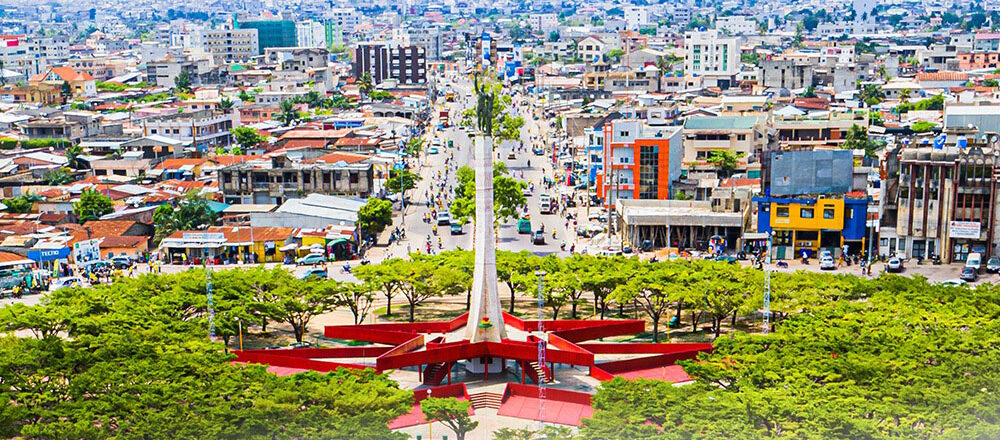
Recent macroeconomic and financial developments
Real GDP growth was steady at 6% in 2022 following a remarkable 7.2% in 2021, led by the primary, secondary, and tertiary sectors. The economy has shown resilience to the effects of recent crises: the COVID-19 pandemic, Russia’s invasion of Ukraine, and the security situation in northern parts of the country. Inflation rose to 2.5% in 2022 from 1.7% in 2021 due to the rising cost of basic necessities. The budget deficit remained high, at 5.5% of GDP in 2022 compared with 5.7% in 2021, due to looser fiscal policy. Outstanding government debt climbed 2.5 percentage points, to 52.8% of GDP in 2022 from 50.3% in 2021. In December 2022, risk of debt distress was moderate. The current account deficit widened slightly, to 4.9% of GDP in 2022 from 4.1% in 2021, with imports rising more rapidly than exports. The depth of the financial sector remains weak overall, with private bank lending representing only 15.2% of GDP in 2022. The nonperforming loan ratio improved to 12.6% in late December 2021 from 16.8% in late December 2020. Over 70% of credit was concentrated among the five largest borrowers in 2021, up from 64.6% in 2020. About 38.5% of the population was living in poverty in 2019, and underemployment was 72.9%. Social protection programs (health and retirement insurance), essential to strengthening social inclusion, are still in development.
Outlook and risks
Real GDP growth is projected to remain steady at 6.2% in 2023 and 6.0% in 2024 thanks to momentum in the primary, secondary, and tertiary sectors. The main risks to the economy are unfavorable variations in global cotton and oil prices and the negative effects of climate change. Furthermore, the unfavorable evolution of Nigeria’s economic situation and the worsening security situation in Benin’s northern areas could compromise the economic outlook. Inflation is projected to rise to 2.8% in 2023 and 2.3% in 2024 as global oil prices stabilize. Budgetary policy is likely to benefit from an ongoing International Monetary Fund program that provides $638 million in funding. The budget deficit is projected to drop slightly, to 4.5% of GDP in 2023 and 4.1% in 2024. The current account deficit is projected to fall to 4.0% of GDP in 2023 and 3.8% in 2024 due to the decline in raw material prices (food products).
Climate change issues and policy options
The estimated climate finance needed over 2020–30 is $13.8 billion, or $1.3 billion a year. If the country receives the same $2.3 billion a year that it received over 2010–20, it will face a finance deficit of at least $910 million a year. Private climate finance remains largely nonexistent. In 2019–20, climate finance reached $360 million, 98.6% of it from the public sector and only 1.4% of it from the private sector. To boost private sector participation in climate finance, the government needs to create a green investment bank that, for example, issues green bonds, provides debt relief for small and medium enterprise and startups. Moreover, to achieve green growth based on green industrialization, Benin should further capitalize on its natural capital, which consists of nearly 121 kilometers of coastline and a continental plateau with 3,100 square kilometers of lagunas, brackish lakes, and a river system comprising 700 kilometers of waterways. The country also has large, yet underutilized, mineral assets (gold, construction materials, iron, phosphates, nickel, and zircon).

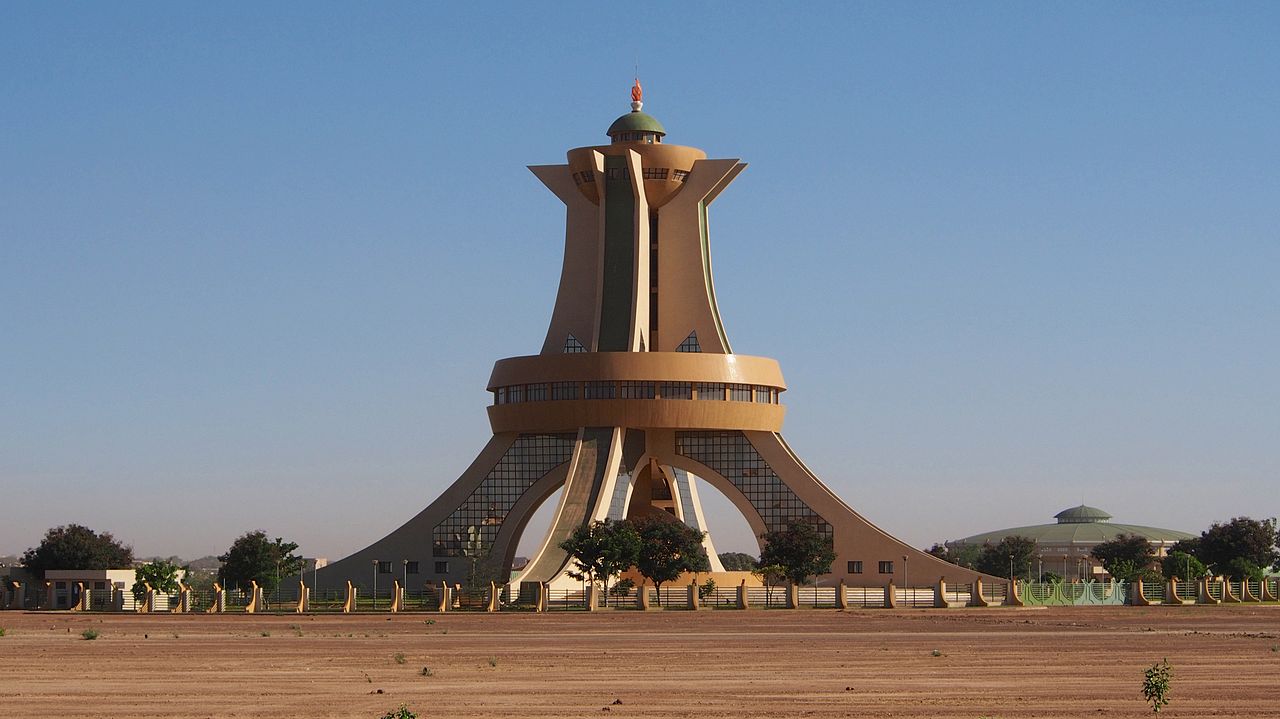
Recent macroeconomic and financial developments
Real GDP growth dropped to 3.2% in 2022 from 6.9% in 2021 because extractive activities fell 13.6% in 2022 despite growing 7.3% in 2021, following the closure of several mines for security reasons. Other factors in the economic slowdown were sociopolitical instability, military coups, a deteriorating security environment, and the effects of Russia’s invasion of Ukraine. Contributors to growth included agriculture (up 10.3% in 2022 after declining 12.3% in 2021) and the tertiary sector (up 6.6% in 2022 compared with 13.5% in 2021). On the demand side, public investment fell. Inflation jumped to 14.4% in 2022 due to higher imports of food products and oil. Private sector funding in the banking sector rose 16% in 2022. The budget deficit widened to 8.5% of GDP in 2022 from 6.3% in 2021 after public spending rose to 26.1% of GDP in 2022 from 25.6% in 2021 to address security and humanitarian challenges and provide oil subsidies. But tax revenue also increased, to 16.3% of GDP in 2022 from 15.2% in 2021. Public debt was an estimated 57.2% of GDP in 2022, up from 47.1% in 2021, suggesting moderate risk of overindebtedness. The current account balance turned to a deficit of 5.2% of GDP following a surplus of 0.4% in 2021 due to higher costs for food and energy imports and a weak rise in exports. The security context and resulting humanitarian crisis have exacerbated poverty in rural areas (estimated at 51.1% in 2019) as well as unemployment (57% of the population age 15 and older).
Outlook and risks
Real GDP is projected to grow 3.7% in 2023 and 3.9% in 2024, less than the 6% average for 2017–19, due to sociopolitical instability and the deteriorating security environment. The restrictive monetary policy of the Central Bank of west African States and improved food availability are expected to reduce inflation to 6.1% in 2023 and 3.7% in 2024. The budget deficit is projected to fall to 6.1% of GDP in 2023 and 5.2% in 2024, despite increased needs to address security and humanitarian challenges, thanks to higher tax revenue. Public debt is projected to remain sustainable, rising to 62% of GDP in 2023 and 2024 due to an increase in treasury bonds issued to fill the budget deficit. The current account deficit is projected to narrow to 3.1% of GDP in 2023 and 2.9% in 2024. Possible headwinds include a delay in re-establishing constitutional order, pronounced deterioration in the security situation, inflationary pressures, and lower prices for exported raw materials (gold and cotton).
Climate change issues and policy options
Burkina Faso remains highly vulnerable to climate change and aims to reduce its greenhouse gas emissions 29.4% by 2030. An estimated $636.9 million a year in climate finance is needed over 2021–30 for adaptation and mitigation, but only $284.5 million a year was mobilized over 2010–20, primarily from international partners. Both the private and banking sectors are involved in climate finance through the Intervention Fund for the Environment and through Coris Bank International (from the Green Climate Fund). Yet the private sector faces several obstacles, including low availability of resources dedicated to green investment, high cost of investment in climate change adaptation, and lack of awareness of how to access climate funds. The country should thus adopt green financial instruments such as green bonds to mobilize additional resources, adopt tax incentives to encourage green investment, and strengthen private capacity to design bankable ecological projects. The agricultural, forestry, and pastoral sectors, which accounted for 22% of GDP over 2011–22), and the mining sector (10.7%) are key to creating wealth. These sectors employ nearly 80% of the labor force. If sustainably exploited, natural capital, estimated at $50.8 billion in 2018, could contribute to climate finance and green growth.


Recent macroeconomic and financial developments
Real GDP growth dropped from 7.4% in 2021 to 6.7% in 2022 due to the ongoing effects of Russia’s invasion of Ukraine and the COVID-19 pandemic. Growth is driven mainly by the extractive industry, manufacturing, construction, retail trade, telecommunications, private and public investment, and private consumption. Inflation rose from 4.2% in 2021 to 5.2% in 2022, induced mainly by higher food prices due to inadequate local supplies and by the higher cost of transportation caused by increased global energy prices. To maintain the population’s purchasing power, the government subsidized oil prices in the first quarter of 2022, upgraded civil service salaries, and capped the price of mass market products. This widened the budget deficit from 4.9% of GDP in 2021 to 6.8% in 2022. Outstanding debt rose from 52.1% of GDP in 2021 to 56.0% in 2022. The risk of overindebtedness remains moderate, as in 2021, even with less capacity to absorb shocks. The current account deficit widened from 4% of GDP in 2021 to 6.9% in 2022 due to the deteriorating terms of trade. Import prices rose more than export prices, exacerbated by the euro’s depreciation against the US dollar. Despite higher average interest rates for bank loans (6.1% in 2022 compared with 5.6% in 2021), credit to the economy rose 11.4%, against 12.5% in 2021, due to momentum in economic activity.
Outlook and risks
GDP is projected to grow 7.2% in 2023 and 7.0% in 2024 as the reforms and investments in the National Development Plan (NDP) 2021–2025 accelerate and production starts at the Baleine gas and oil field discovered in 2021–22. Growth could be fueled by several sectors (energy, construction, mining, agribusiness, trade, telecommunications, and agriculture), as well as investment and consumption. Inflation is projected to fall to 3.7% in 2023 and 2.7% in 2024 due to increased local food supplies and the continued fight against the high cost of living. The budget deficit is projected to narrow to 5.2% of GDP in 2023 and 4.1% in 2024 due to greater mobilization of domestic resources and better control of public spending. The current account deficit is projected to widen to 6.1% of GDP in 2023 and 6.0% in 2024 due to higher NDP investment. Possible headwinds include a deteriorating political climate following local elections in 2023, the ongoing effects of Russia’s invasion of Ukraine, a resurgence of the COVID-19 pandemic, and a decline in the price of agricultural raw materials.
Climate change issues and policy options
The climate finance deficit averages $2.7 billion a year over 2020–30, with limited potential for private contributions. The country has no sovereign fund, and investment funds are limited and difficult for small and medium enterprises to access. But the country can rely on its network of insurance companies and on two pension funds (Caisse Nationale de Prévoyance Sociale and Caisse Générale de Retraite des Agents de l’État). Due to resource mobilization difficulties, private climate finance remains extremely low. Resolving this problem should focus on addressing the inadequate legal framework, specifically for the carbon market, and tax incentives; the lack of awareness of existing finance; and poor national capacity and technical skills in innovative climate finance. Natural capital, worth an estimated 45% of the national economy, is a major asset that should be promoted as the country seeks to establish sustainable economic growth.

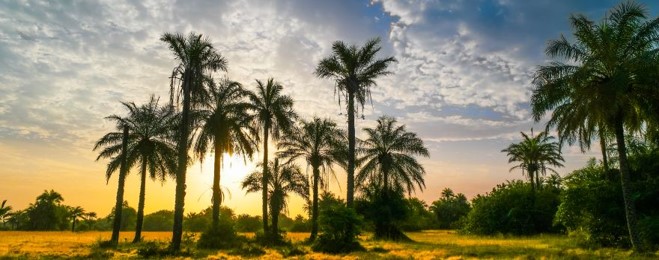
Recent macroeconomic and financial developments
Real GDP growth dropped to 3.7% in 2022 from 6.4% in 2021 due to inflationary pressures that limited private consumption on the demand side and lower manufacturing and primary sector on the supply side. Inflation rose to 7.9% in 2022 from 3.3% in 2021, driven by higher prices for imported food and oil. The budget deficit widened to 6.3% of GDP in 2022 from 5.6% in 2021 due to temporary measures to curb the effects of Russia’s invasion of Ukraine, irregular hiring of workers, and expenses linked to upcoming elections. The deficit was financed by grants and loans as well as bond issues. Risk of overindebtedness is high after public debt rose from 78.5% in 2021 to more than 80.0% in 2022. The current account deficit widened to 5.8% of GDP in 2022 from 0.8% in 2021 on higher prices of imported commodities and lower exports of cashews. The financial sector is solid except one undercapitalized systemic bank. The nonperforming loans ratio dropped from 21.8% in 2020 to 14.6% in June 2022. Poverty rose from 63.0% in 2019 to 68.4% in 2021 due to the COVID-19 pandemic. In 2022, higher prices affected private consumption and thus the quality of life of households, which spend most of their income on food.
Outlook and risks
Real GDP is projected to grow 4.6% in 2023 and 5.1% in 2024 thanks to planned infrastructure investment and the health of agriculture and industry. Inflation is projected to reach its target of 3% in 2024 thanks to the central bank’s tighter monetary policy. The budget deficit is projected to narrow to 5.7% of GDP in 2023 and 3.1% in 2024 thanks to higher revenue and control of public spending. Public debt is projected to fall to 75.4% of GDP in 2024 as a result of reforms supported by a new International Monetary Fund program to ensure debt sustainability. The current account deficit is projected to narrow to 4.3% of GDP in 2024, reflecting an expected increase in cashew exports. Possible headwinds include deteriorating terms of trade (particularly in cashew export prices), sociopolitical instability, delayed implementation of reforms, and climate shocks. Persistent inflationary pressures would affect food security and poverty.
Climate change issues and policy options
Guinea-Bissau is among the countries most affected by climate change. An estimated $688.8 million in climate finance is needed to address mitigation and adaptation over 2021–30 and reduce greenhouse gas emissions 30%. Committed finance has been mobilized from development partners and climate funds. Investment from the private sector, including banks, is practically nonexistent, mainly because of the absence of a suitable regulatory framework, the lack of expertise and experience, and the high cost of investment. The sectors that are particularly adapted to private investment include renewable energy, energy efficiency, forestry, and biodiversity. To attract private finance, the country must develop a regulatory framework dedicated to climate finance, put in place fiscal incentive measures, promote good governance, and increase technical capabilities. while the public accounts make it difficult to access sustainable financing markets and innovative instruments, the country could create a national green fund with the help of partners and target impact funds that are increasingly directed toward forestry, biodiversity, and sustainable agriculture. The country has considerable agricultural potential, natural resources that could be exploited (large deposits of bauxite, phosphates, hardwood, and heavy sand), and oil reserves estimated at 1.1 billion barrels in 2019.


Recent macroeconomic and financial developments
Real GDP grew 3.7% in 2022, up from 3.1% in 2021, driven by the primary and secondary sectors, particularly cereal production (up 16.7%) and industrial gold production (up 4.4%), and higher consumption by households and government agencies. Inflation rose to 9.7% in 2022 from 3.9% in 2021, leading to three 25 basis point increases in key Central Bank of west African States rates. The budget deficit widened to 5.0% of GDP in 2022 from 4.9% in 2021. Of the 1,348.0 billion CFA francs ($2.3 billion) in funding need in 2022, 83.3% was covered through domestic financing, especially from the west African Economic and Monetary Union financial market (96.8% of domestic financing), where Mali’s Public Treasury raised only 71.9% of its resource objectives. Public debt declined to 49.9% of GDP in 2022 from 52.0% in 2021, but the risk of overindebtedness remains moderate. The current account deficit narrowed to 7.2% of GDP in 2022 from 7.7% in 2021, as exports rose more than imports (20% versus 10%). The banking system (comprising 14 banks and 3 bank-like financial institutions) recorded a marked improvement in portfolio quality, with a decrease of the nonperforming loan ratio to 4.2% in December 2022 from 4.7% in December 2021. Social conditions deteriorated in 2022, with the poverty rate rising to 45.4% from 44.6% in 2021, 1.3 million additional people in need of humanitarian aid, 20% of schools closed, and 2.5 million people lacking health coverage.
Outlook and risks
Real GDP is projected to grow 5.1% in 2023 and 5.3% in 2024, driven by recovery in cotton production, extractive activities (discovery of lithium), industrial gold production, the launching of new industries, and the restructuring of struggling industries. Inflation is projected to moderate at 2.6% in 2023 and 2.4% in 2024 as a result of strong cereal production (expected to jump 7.7% in 2023 and 5.1% in 2024) coupled with the temporary suspension of grain exports. The budget deficit is projected to narrow to 4.8% of GDP in 2023 and 4.1% in 2024 thanks to the introduction of the Integrated Civil Service Management System. Public debt is projected to rise to 53.4% of GDP in 2023 but decline to 53.3% in 2024, with a crowding-out effect on credit to private companies from 2023 and domestic debt (27.6% of GDP) likely to exceed external debt (25.8%). The current account deficit is projected to narrow to 6.6% of GDP in 2023 (with the Export Development Strategy 2022–2025 set to raise exports 25% by 2025) but widen to 6.8% in 2024. Possible headwinds include new sanctions by the Economic Community of west African States resulting from changes to the consensus timetable for elections, the lack of security, and the impact of climate change.
Climate change issues and policy options
The cost of mitigation measures for 2020–30 is $3.0 billion, and adaptation finance is likely to be $8 billion. To mobilize these resources, Mali will have to rely on a range of internal and external finance sources. The financing gap could be substantial, although the number of parties involved makes it difficult to estimate. The private sector has considerable potential, including the Private Sector Guarantee Fund. The government has designated the National Bank for Agricultural Development and the Development Bank of Mali to be accredited by the Green Climate Fund. A strategic plan has been developed to ensure that the private sector has an active role in climate finance. Private climate investment is being directed toward energy, waste management, forestry, and agriculture. The private sector could profit from the country’s enormous potential, as Mali has some of the greatest solar power potential and the largest reserves of natural hydrogen in the world. The obstacles to private climate finance are the lack of information concerning opportunities, the lack of training in procedures for accessing climate finance, low participation in the development of climate change strategies, and limited access to international finance. Solutions include training, awareness-raising, issuing green bonds, providing access to clean development mechanisms, selling carbon credits, adopting ecological taxation, and creating a private sector lending window for the Green Climate Fund.


Recent macroeconomic and financial developments
Real GDP growth rebounded to 7.2% in 2022, on strong performance across all sectors, particularly primary and tertiary services (which grew 7%), on the supply side and ongoing major infrastructure projects on the demand side. Inflation exceeded the west African Economic and Monetary Union (wAEMU) target of 3%, fueled by higher consumer food prices and the deteriorating international economic situation. The budget deficit widened to 6.6% of GDP in 2022 from 6.1% in 2021 due to public spending rising more than public revenue. Constraints on budgetary performance continue to be both structural (tax base, economic structure, economic and social needs, and the like) and cyclical (lower global price for uranium, closing of the border with Nigeria). The budget deficit was financed primarily by external resources (budgetary support and projects), mainly grants. Public debt rose slightly to 51.2% of GDP in 2022 from 50.9% in 2021. Foreign loans accounted for 65% of public debt—below the wAEMU target—resulting in moderate risk of external debt distress. The chronic current account deficit widened to 15.1% of GDP in 2022 from 13.9% in 2021, financed by concessional loans and foreign direct investment, which rose substantially between 2017 and 2020. The social situation remains precarious, with extreme poverty at 42% in 2021.
Outlook and risks
Real GDP is projected to grow 7.0% in 2023 and 11.8% in 2024, with all sectors growing at least 5%. Consumption and higher oil investment as well as exports enabled by the new pipeline are projected to boost GDP growth. Possible headwinds include lack of security, climate change, a deteriorating international economic situation, and the like. Inflation will be contained below the wAEMU target of 3%. Public finances are expected to consolidate, with a substantial increase in public revenue from oil production, and the quality of public spending is improving under the new public finance reform strategy. Public debt is projected to remain sustainable, with most external borrowing contracted on concessional terms. The current account and trade deficits are projected to narrow. Social conditions are also expected to improve thanks to economic recovery and the resilience-building measures in the new Economic and Social Development Plan 2022–2026.
Climate change issues and policy options
Niger is highly exposed and vulnerable to the effects of climate change, with substantial energy requirements for its economic and social development. The country’s objective is to fulfill its commitments under the Paris Agreement, particularly in terms of limiting the rise in temperature to less than 2°C or even 1.5°C by 2050. To meet this challenge and implement the revised Nationally Determined Contribution roadmap, Niger has developed a private sector financing strategy. The strategy sets out five intervention areas: mobilizing and involving private industry and professional organizations in adaptation planning, implementation, and monitoring and evaluation; updating the overview of the market’s state of progress by identifying the sectors that are most promising and of the most interest to companies, compiling an inventory of companies in these sectors or with the potential to participate in them, and conducting a financing needs assessment; mobilizing financial resources from private funders as well as private stakeholders and corporations and implementing an annual work plan and budget; promoting climate technology innovation; and building capacity for company training and support structures as well as for companies themselves.

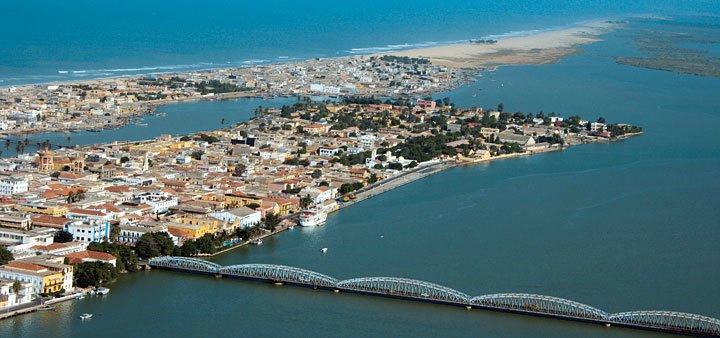
Recent macroeconomic and financial developments
Real GDP growth dropped to 4.0% in 2022 from 6.5% in 2021 due to the effects of Russia’s invasion of Ukraine, a sharp slowdown in the secondary sector, and contraction in the primary sector (which shrank 0.5%) caused by an unfavorable agricultural season and sanctions against Mali, the leading customer for Senegalese exports, by the Economic Community of west African States. Inflation reached a record high of 9.7% in 2022, driven by soaring food prices. To contain these inflationary pressures, the Central Bank of west African States revised the minimum liquidity injection rate to 3.0% and the marginal lending rate to 5.0%, and the government raised energy subsidies to 4% of GDP and drastically reduced public investment. The budget deficit narrowed slightly to 6.1% of GDP in 2022 from 6.3% in 2021 thanks to a 23% increase in public revenue. Public debt rose from 64.0% of GDP in 2019 to 75.0% in 2022 because of public deficits accumulating since the COVID-19 pandemic. The current account deficit is projected to widen to 17.5% of GDP in 2022 from 12.1% in 2021 following the sanctions on Mali and higher import costs. The banking sector remains resilient, with a 20.2% increase in loans to the economy. The nonperforming loans ratio fell slightly from 11.5% in 2021 to 11.2% in 2022. The poverty rate remained stable at around 37% in 2022 as growth was driven by the urban services sector, whereas poor people live in rural areas and depend on farming.
Outlook and risks
Real GDP is projected to grow 5.0% in 2023, driven by an upturn in agricultural output as well as gradual normalization of the effects of Russia’s invasion of Ukraine, and to 9.8% in 2024 thanks to expected oil production. Inflation is projected to drop to 3.4% in 2023 and 2.6% in 2024 due to tighter monetary policy. The budget deficit is projected to narrow to 5.8% of GDP in 2023 and 4.5% in 2024 thanks to the expected rationalization of subsidies and domestic revenue mobilization. Debt is projected to fall below 70% of GDP in 2024 thanks to the narrower public deficit and growth prospects. The current account deficit is projected to drop below 10% of GDP in 2024 for the first time since 2020, with the start of hydrocarbon exports. Possible headwinds include prolongment of Russia’s invasion of Ukraine, declining terms of trade, effects of climate change and the regional security situation.
Climate change issues and policy options
Despite having a carbon footprint well below that of developed countries, Senegal is experiencing substantial economic impacts due to vulnerability to climate change. About $2.8 billion a year is needed in compensation. The estimated climate finance needed to strengthen climate resilience is $13 billion, or $1.1 billion a year. Climate finance thus needs to be pursued both locally and internationally to ensure the energy transition and build resilience to climate change. The private sector’s contribution to climate finance remains low. The country has initiated a range of actions to attract private investment, particularly by implementing a clear regulatory framework and innovative financing mechanisms, but the private sector makes far too little use of these financing sources. Crédit Agricole’s accreditation with the Green Climate Fund in 2020 represents an important step in mobilizing the private sector around climate finance. To increase private participation, an incentive system (fiscal or preferential) is needed that will promote climate change adaptation and mitigation. Added to this is the need for further technical capacity-building and guaranteed access to information on private investment opportunities and how to structure and implement projects.

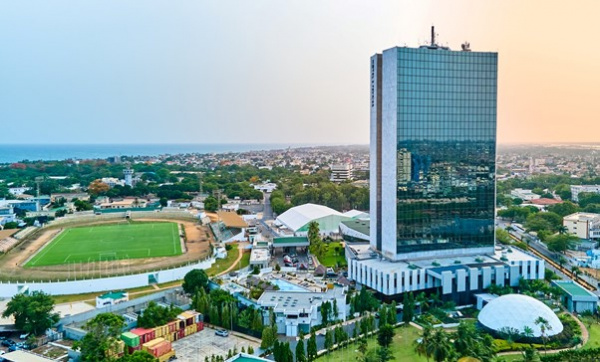
Recent macroeconomic and financial developments
Real GDP growth declined to 5.5% in 2022 from 6.0% in 2021 due to the security crisis in the far north of the country and Russia’s invasion of Ukraine. Inflation rose from 4.6% in 2021 to 7.8% in 2022, driven by higher food and energy prices. The fiscal deficit widened from 4.7% of GDP in 2021 to 8.4% in 2022 due to purchasing power support measures (subsidies and tax exemptions for basic products) as well as additional security spending. The current account deficit widened from 0.9% of GDP in 2021 to 3.7% in 2022 due to higher costs of imported goods (oil and food) brought about by the disruption of supply chains during the COVID- 19 pandemic and the effects of Russia’s invasion of Ukraine. Loans to the private sector to boost economic activity increased 14.3%, to 32.8% of GDP. The nonperforming loans ratio fell from 12.0% in 2021 to 8.1% in 2022 due mainly to the recovery of overdue loans and favorable monetary conditions in the west African Economic and Monetary Union, which allowed banks to lighten their balance sheets to restore their capacity to finance the economy. Risk of debt distress is moderate. Public debt dropped to 55.9% of GDP in 2022 from 63.1% in 2021 thanks to debt management measures.
Outlook and risks
Real GDP is projected to grow 6.3% in 2023 and 6.6% in 2024 thanks to the government’s 2025 roadmap for infrastructure projects and economic, financial, and structural reforms, including those aimed at boosting agricultural production and yields. Inflation is projected to fall to 3.8% in 2023 and 2.6% in 2024 thanks to purchasing power support from the government. The current account deficit is projected to widen slightly to 6.1% of GDP in 2023 and 6.3% in 2024 on higher import growth than export growth. The fiscal deficit is projected to narrow to 6.6% of GDP in 2023 and 5.1% in 2024 due to continued public financial management reforms. Possible headwinds include unfavorable fluctuations in global phosphate and oil prices, prolongment of Russia’s invasion of Ukraine, repeated terrorist attacks in the country’s northern regions, and the effects of climate change.
Climate change issues and policy options
Obtaining private financing for climate change and green growth is challenging for Togo. The estimated finance needed to adequately address climate change is $7.0 billion over 2020–30, or $702.6 million a year. The estimated cost of losses and damages due to adaptation is $2.7 billion, or 38.8% of total financing need, and the financing gap averages $560 million a year. This gap could severely limit the country’s ability to build climate resilience and promote green growth and calls for private sector mobilization. Of the $126 million in climate finance over 2019–20, only $17.4 million (14%) was provided by the private sector. The private sector is thus being called on to strengthen access to electrical power by providing individual solar kits and to fight coastal erosion in order to ensure environmental sustainability and mitigate the effects of climate change.

Innovative investment platform designed to revolutionize access to investment opportunities in frontier markets, particularly in Africa.
© Copyright 2024. All Rights Reserved by IMPULSR
